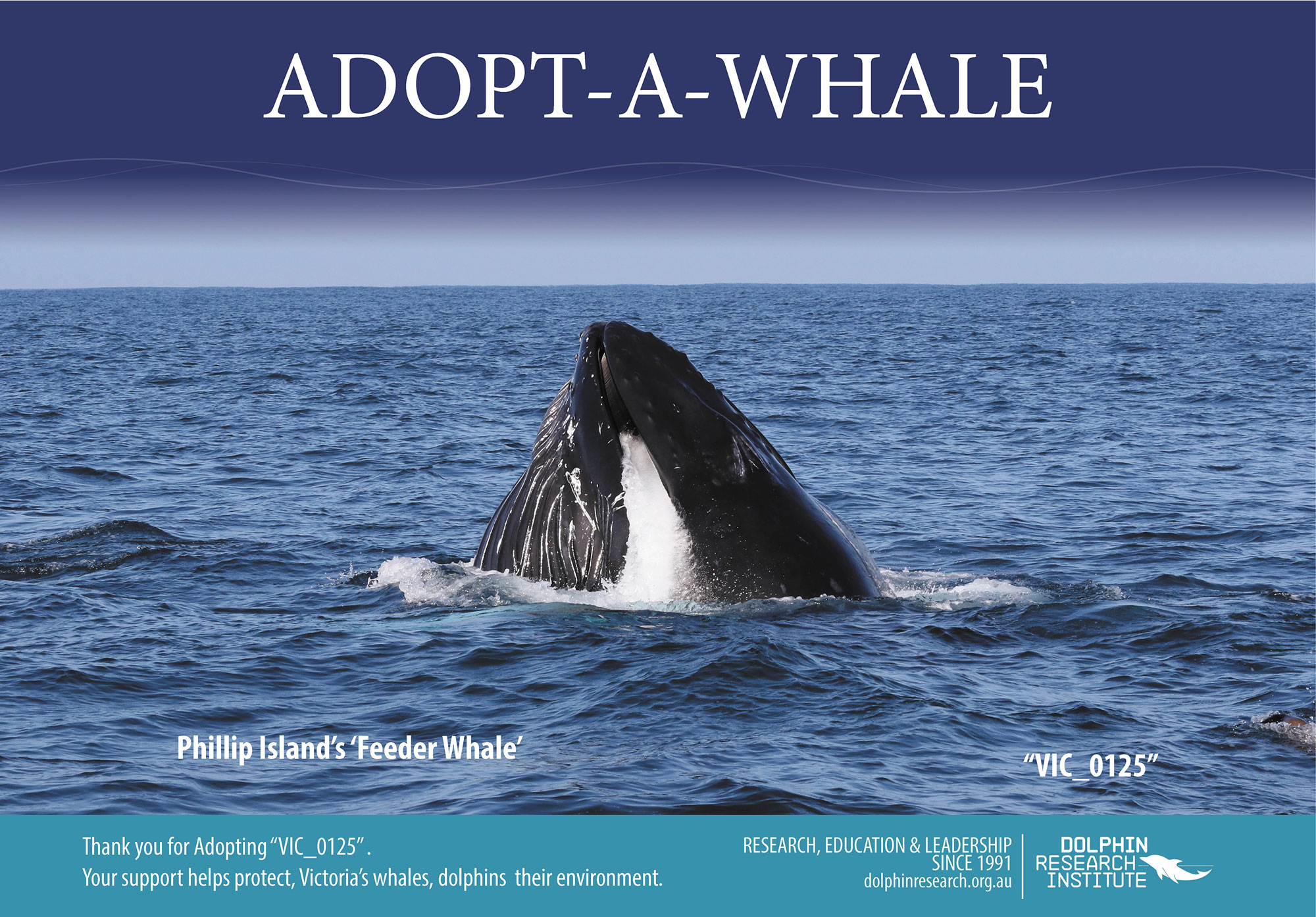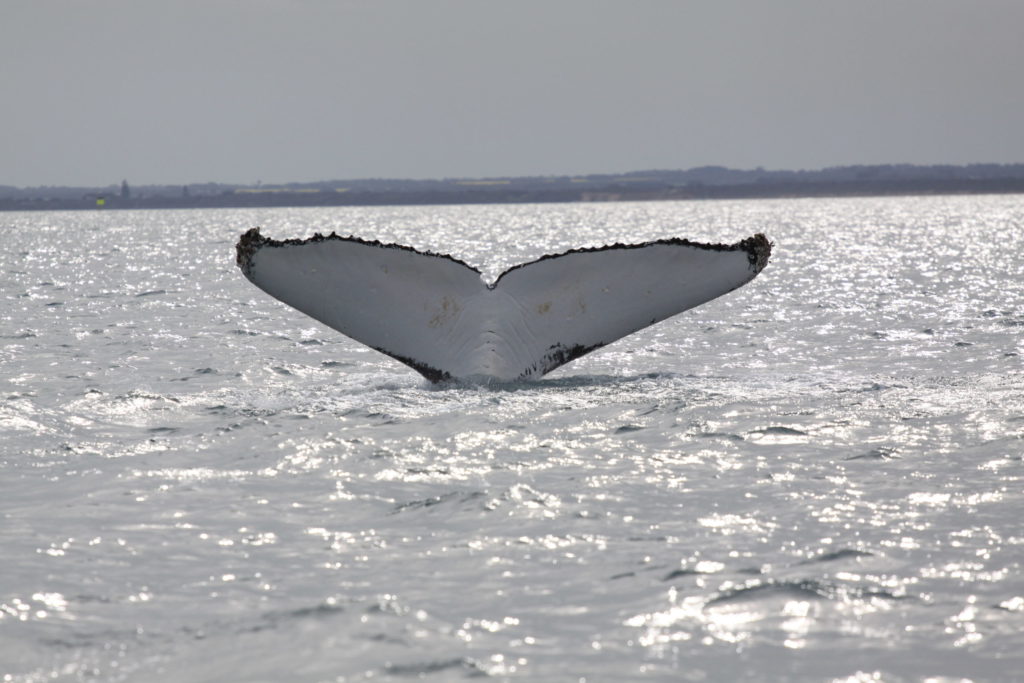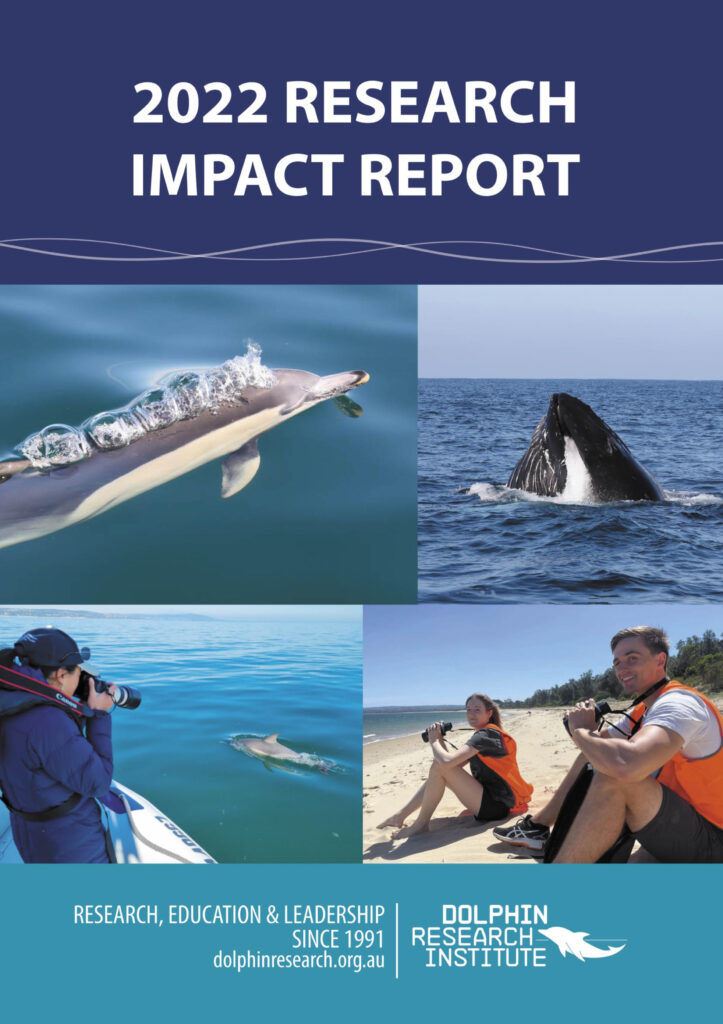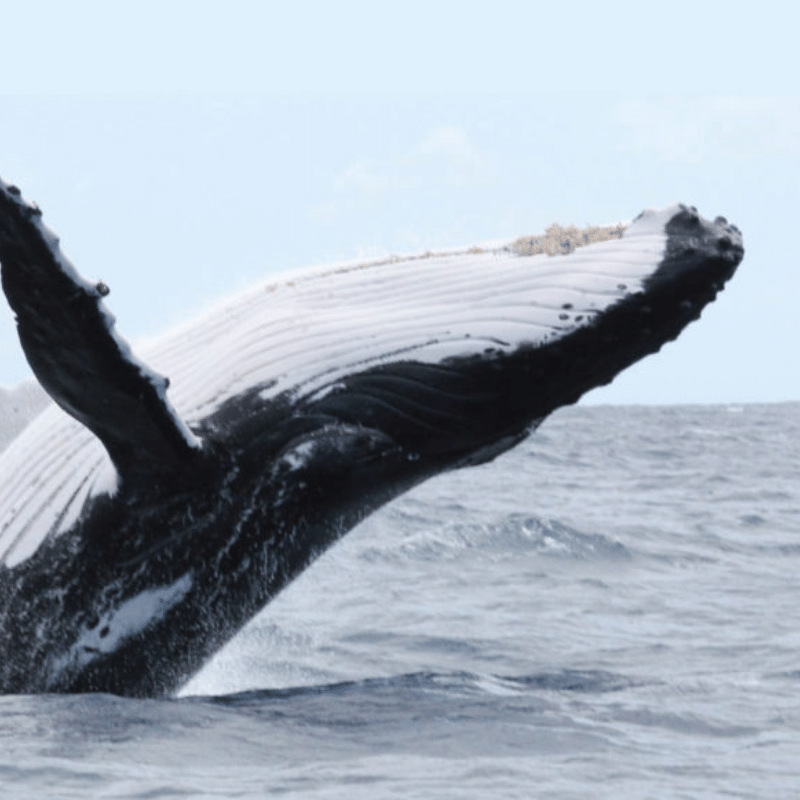

Below you can meet VIC 0009 and VIC 0138, two very special humpback whales recorded in our waters.
Our research team identifies the individual humpbacks using images of their unique tail flukes. These are mostly taken by many keen citizen scientists.
The Dolphin Research Institute hosts the Victorian Humpback Fluke ID Catalogue which holds records of more than 200 individual whales collected over two decades. We also host the Two Bays Whale Project which captures the movement of whales through Victoria’s waters (especially the central region).
Our research provides crucial basic information about the whales and dolphins in our region. All reports are publically available and shared with federal and state governments, the International Whaling Commission and the Southern Hemisphere Whales and Climate Project.

Whale VIC_0125 was first photographed in July of 2020 by citizen scientist, Barb Wallace off Pyramid Rock, Phillip Island. On this day, this whale was actively feeding on small baitfish and was accompanied by common dolphins. As with all humpback whales, the underside of this animal’s fluke was uniquely marked but it was the amazing patterning that caught the eye of our researchers. Over the course of the following week, 125 was sighted a further three times and was observed feeding during each encounter, hence the common reference to this animal being ‘Phillip Island Feeder’.
Using the images captured by Barb and project partner Wildlife Coast Cruises, we will continue to monitor for re-sights of this whale over time and space.
Who knows where we will see 125 next?

Whale VIC_0009 was first photographed in the Two Bays region by the Dolphin Research Institute off Mount Martha in Port Phillip in August of 2011. On this day, she was accompanied by four presumed male humpback whales who appeared to be competing for the right to mate with her. The pod was very active in the area and were quite violent toward each other at times. Our research team were in the midst of this amazing event and managed to collect some spectacular images, including the fluke of VIC_0009. But this is not the only sighting of this whale. After uploading images to the online platform Happywhale, we were excited to learn that VIC_0009 was first sighted in Hervey Bay, Queensland, in 2008. We will keep watch for future sightings.

Whale VIC_0138 is a rather boisterous showoff. This youngster was first photographed in October of 2020 near Rodondo Island off Wilsons Promontory. We are not sure whether it is male or female, but it was in the company of another humpback whale as they made their journey south. On this windy Spring day, whale watchers were treated to a spectacular and prolonged display of tail slapping, head lunging, and general playfulness. These animals paused their migration to seemingly enjoy their last moments off the Australian mainland before heading into the cold Southern Ocean.
This is what they say…
”"We Adopt-A-Dolphin because we trust the team and believe in the work to protect marine life and the bays."
”"We have been part of the DRI family for over 20 years now, and love the visionary approach."
”"It has and continues to be such a rewarding journey."


